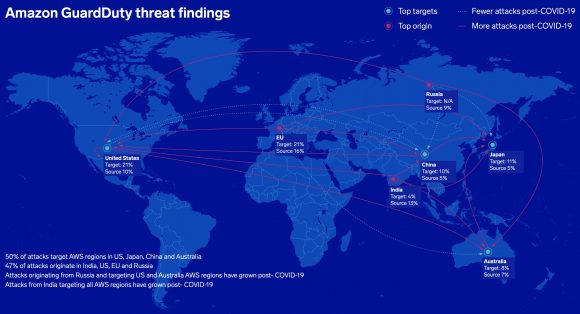Sumo Logic: inside the architectural cement mixer of multi-cloud
Champion of continuous intelligence Sumo Logic spends its time looking inside the state of the modern application technology stack, including changing trends in cloud and application adoption and usage by customers.
That’s what it does.
The company’s latest market analysis leads it to talk about the mass (or at least widespread adoption) of mult-cloud architectures and point to the need for real-time intelligence across increasingly complex and convoluted structures.
In other words: we’ve long realised that hybrid multi-cloud (different cloud types in different configurations from different vendors) is the way forward, but at the same time, we need a way of knowing what’s going on inside an ever-more convoluted double-helix of internal architectural connections.
Bruno Kurtic, founding VP of strategy and solutions at Sumo Logic has inevitably highlighted the impact of Covid-19 this year in his assessment of how we stand.
His firm’s “Continuous Intelligence Report: The State of Modern Applications, DevSecOps and the Impact of Covid-19” does indeed ‘say it on the tin’, so he had to obviously make note of it.
He says that the trend for multi-cloud adoption comes in line with an expanding threat landscape and the need for improved collaboration across DevSecOps, as companies quickly made changes to adapt.
“The need for continuous intelligence is even more critical as digital businesses require real-time analytics in order to deliver high performance, highly scalable, always-on digital services to speed decision making and drive the best customer experiences,” said Kurtic.
Sumo Logic: filling the crack
For its recent annual study, Sumo Logic analysed anonymised production data from 2,100 of its own customers who run massive mission-critical modern applications on cloud platforms like AWS, Azure, and Google Cloud Platform as well as hybrid cloud infrastructure.
Key findings include the suggestion that amid the pandemic, multi-cloud adoption grew by 70% year over year, outpacing the previous 12 months that saw 50% growth.
Also, enterprises are increasingly turning to modern cloud platforms such as Amazon Web Services (AWS), Microsoft Azure, and Google Cloud Platform (GCP), to deliver high quality and secure applications to their customers.
What is a modern cloud architecture?
As more enterprises become dependent on the cloud, Sumo Logic says they’re shifting to a more ‘modern architecture’ with an application stack that consists of new tiers, technologies and microservices, so what does that look like in real terms(?):
- The typical AWS application has as many as 26 services (up from 15 last year) and is deployed across two or more regions and two or more accounts.
- Over 40 percent of Sumo Logic’s AWS customers are using container orchestration.
- Kubernetes is fast becoming the default app platform, with over 85% of businesses choosing Kubernetes to build and operate applications across multiple clouds.
- Additionally, serverless architecture is continuing to grow and AWS Lambda adoption is now at 37 percent.
In terms of security, AWS customers adopted CloudTrail (60 percent), VPC Flow Logs (34 percent) and GuardDuty (22 percent) to meet new security concerns. Additionally, the patterns of attack have changed throughout the course of the pandemic. The largest jump in attack origin came from Russia and India.
The company says that as the modern application stack continues to be reshaped by multi-cloud, open source technologies and factors from extenuating circumstances like Covid-19, companies need a strategy to address this growing complexity — and (logically, because the firm is selling a concept, technology proposition and platform here) Sumo Logic thinks the answer lies in continuous intelligence, a new category of software that uses real-time analytics and insights from a single, cloud-native platform across multiple use cases to speed decision-making.
Download a full copy of Sumo Logic’s free report here.

Sumo Logic Global Intelligence analyses more than 55 threats from hundreds of Amazon GuardDuty customers.



